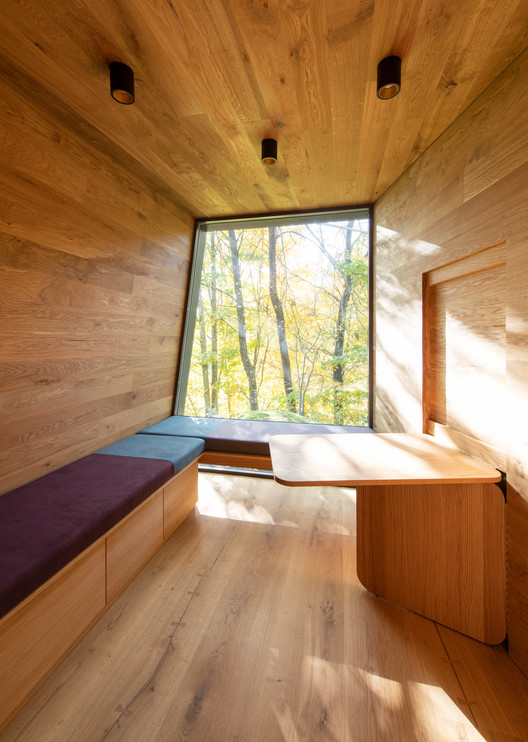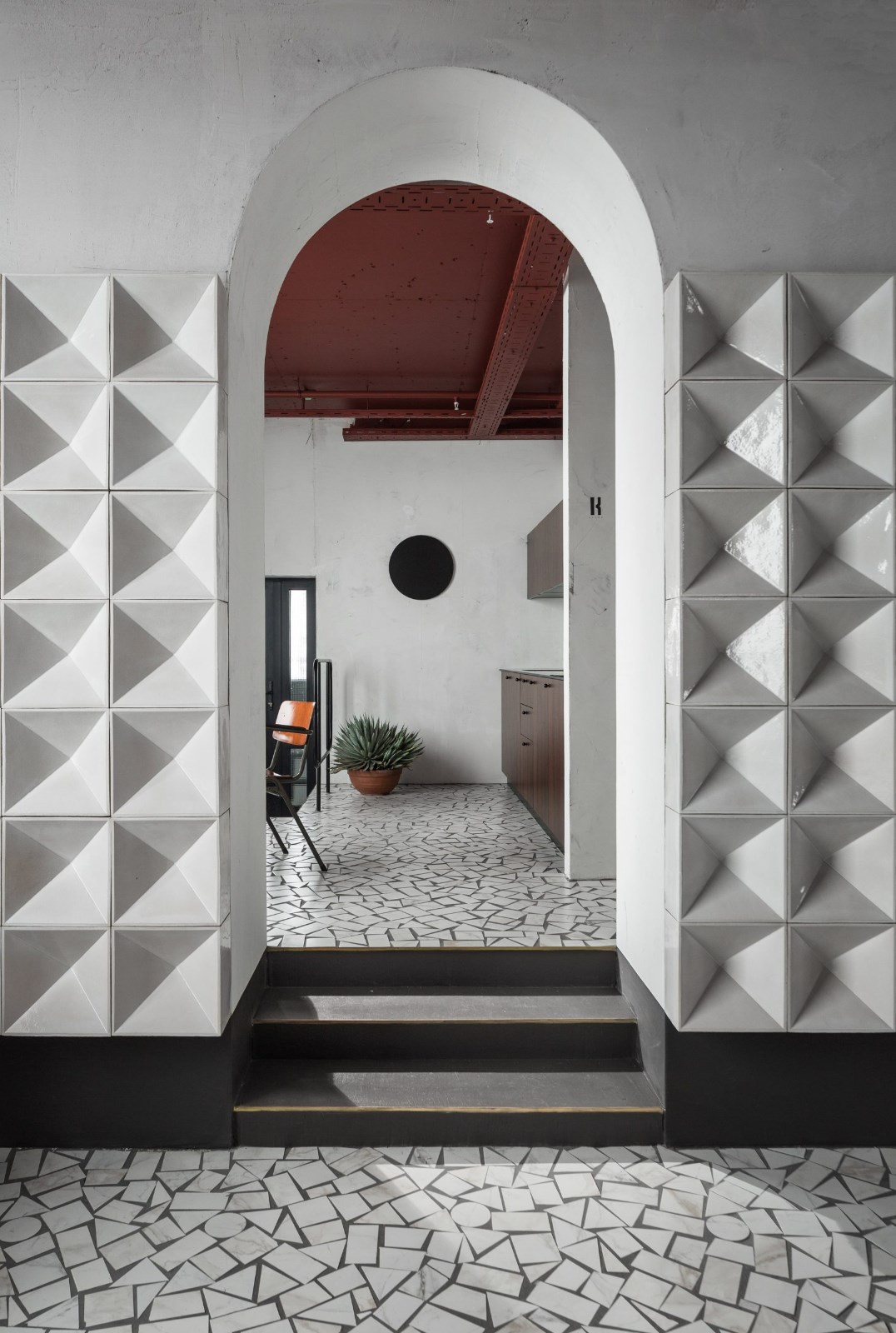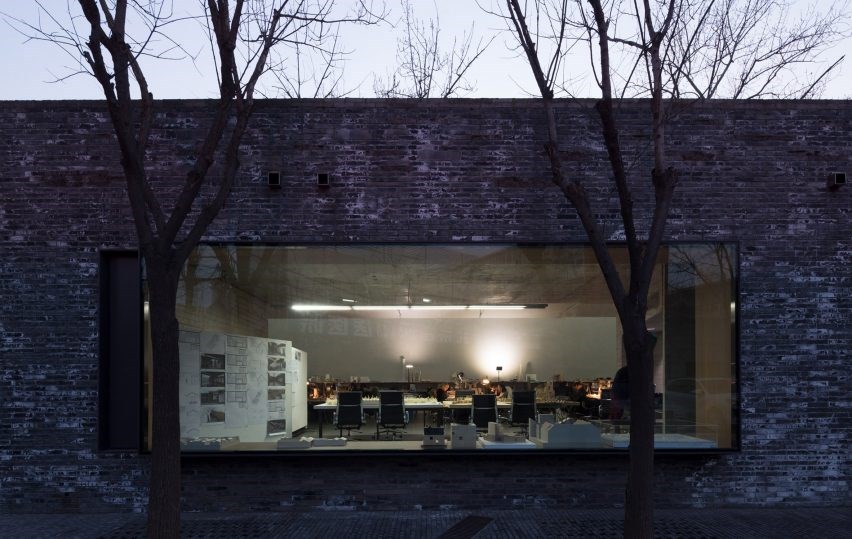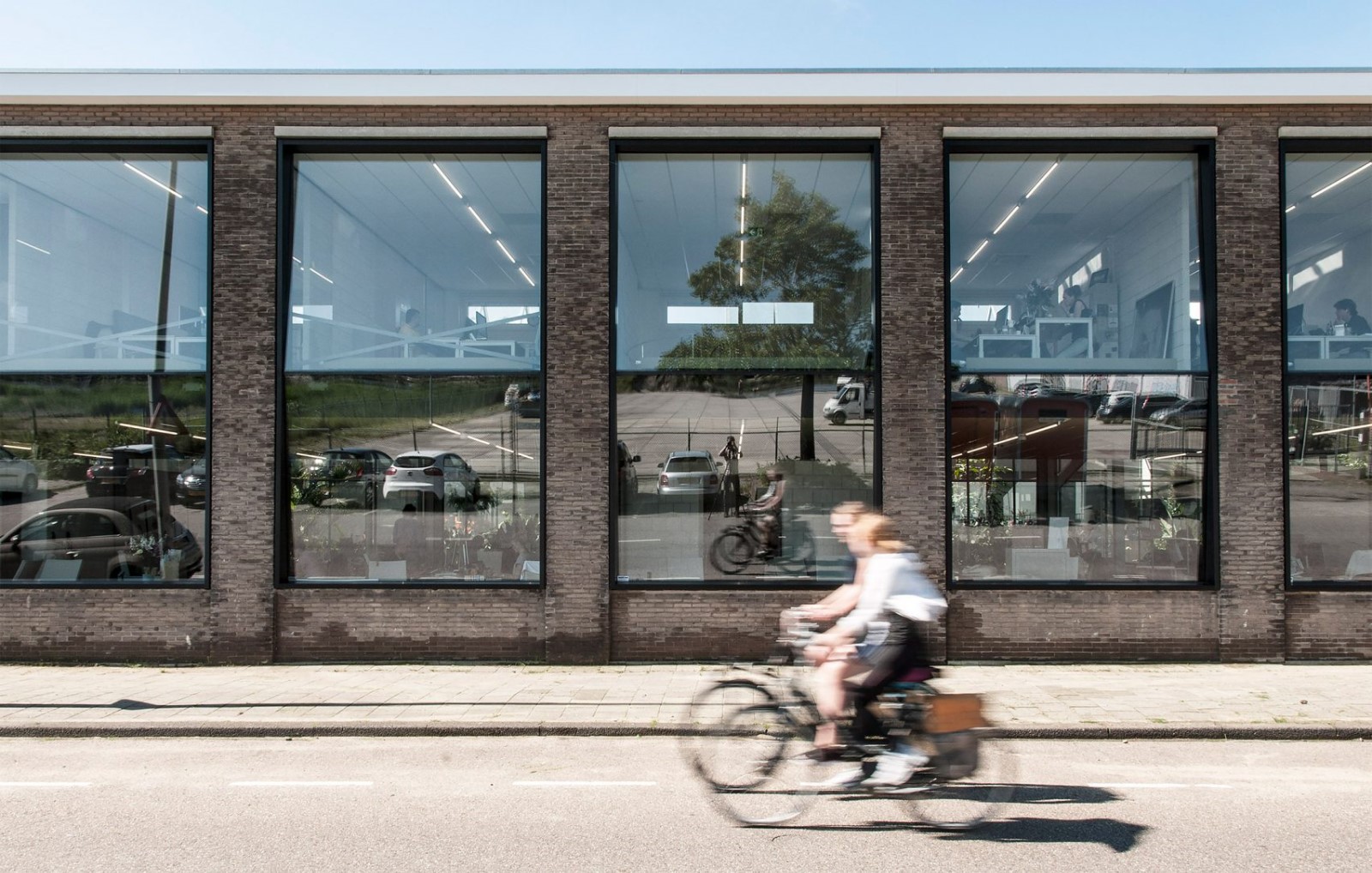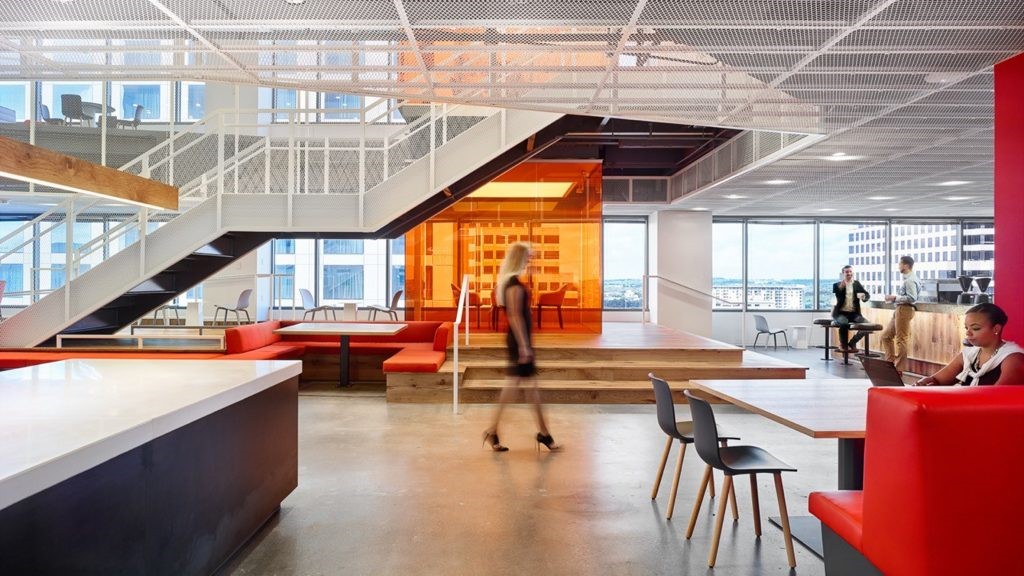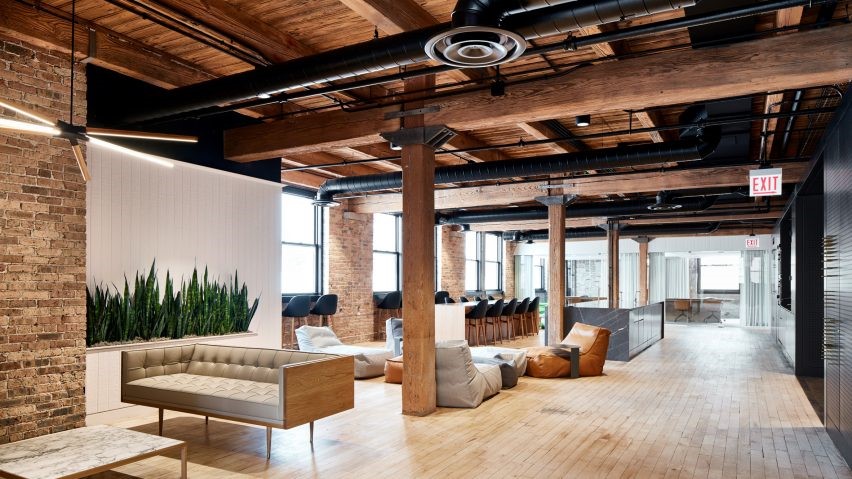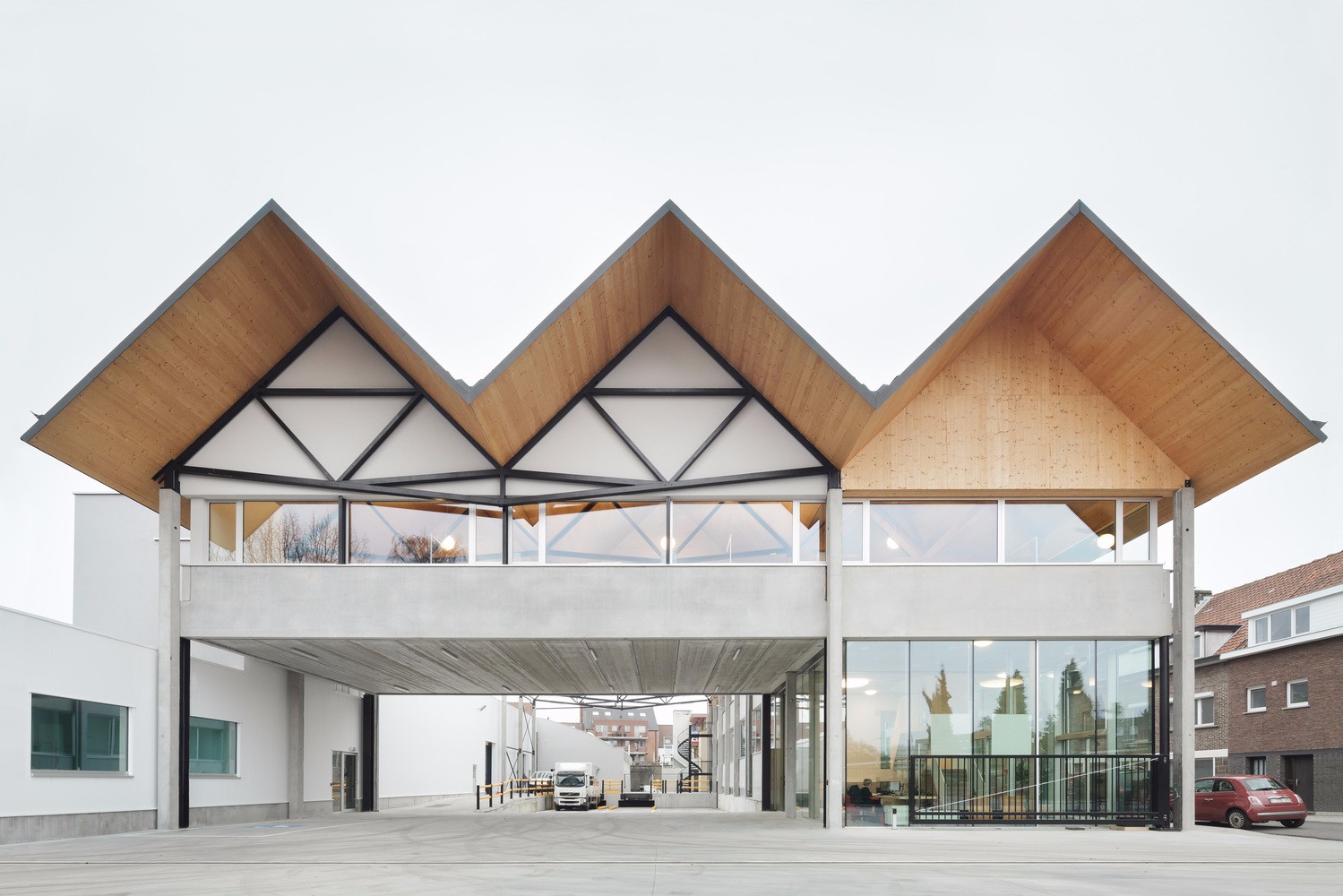VIL Domaen
2015-12-30 17:00


架构师提供的文本描述。该项目的VIL是一个内部建设在现有仓库为洛杉矶总部的内容和制作机构意识思维。一个主要的建筑特点是一个连续的表面板,形成一个铰接式天花板,同时折叠围绕两个会议空间。数字表面操作在一定程度上遵循了一些务实的规定,但也创造了一个分裂的两种材料的床单,似乎是人为地撕开接缝,让窥视进入本来封闭的会议室。
Text description provided by the architects. The project VIL is an interior build-out in an existing warehouse for the Los Angeles headquarters of the content and production agency Conscious Minds. A main architectural feature is a continuous surface sheet forming an articulated ceiling and simultaneously folding around two conference spaces. The digital surface manipulation follows in part pragmatic stipulations but also creates a divided two-material sheet that appears to artificially tear at the seams to allow glimpses into the otherwise enclosed conference rooms.


从一开始,就把重点放在为多种用途和目的创建内部,因为作为内容和生产提供商,客户端请求一个高度灵活的空间,允许为他们的客户群提供分期场景和不同的团队配置。同时,有人建议建立一个现代建筑主题,允许区分工作室和普通开放式平面图仓库办公室。
From the beginning, an emphasis was put on creating an interior for multiple uses and purposes since as a content and production provider, the client requested a highly flexible space that allows staging scenarios and different team configurations for their client-base. At the same time it was suggested to establish a contemporary architectural leitmotif that allows distinguishing the studio from common open floor plan warehouse offices.


Floor Plan




程序与现有空间之间的摩擦成为建筑设计的主要驱动力。两个新的会议空间,战略性地放置在仓库的较低的开放空间部分,膨胀一个表面,作为嵌入对象在一个连续的单一皮肤表面。这个物体对物体的对话也启动了在多个位置的剪影皮肤的切碎,允许断裂的一些碎片折回编程空间,为开口提供机会。
The friction between program and existing space became the main driver of the architectural design. Two new conference spaces, strategically placed in the lower open space portion of the warehouse, inflate a surface, acting as embedded objects in a continuous single skin-surface. This object vs. object dialogue also initiates the shredding of the silhouetting skin in multiple locations allowing some fragments of the rupture to fold back into the programmed spaces offering opportunities for apertures.


私人办公室面临着两端由两个会议空间定义的主要开放工作区。同时,一个主要的会议空间与一个展开的休息室构成大厅空间。一个大型的两层空间作为一个主要的舞台区域,有各种社会设施,如厨房、酒吧、图书馆和墙对墙的跨越台阶,或者作为座位或通过一个24英尺宽的滑动门连接到室外,给这个空间提供最大程度的灵活性。
Private offices are facing the main open workspaces that are defined by the two conference spaces on both ends. Simultaneously, a main conference space forms the lobby space with an unfolding lounge component. A large two-story space serves as a main staging area with various social amenities such as kitchen, bar, library and wall-to-wall spanning steps that either serve as seating or connection to the outdoor via a 24ft wide sliding door, giving a maximum degree of flexibility to this space.


在物质上,该项目保留了一个有机的,自然的外观,主要是使用原始胶合板。然而,材料的态度是有目的模棱两可,允许材料偶尔表现为软角或硬边。材料分裂遵循直线断裂沿空间的主要方向,允许胶合板进入正式对话与白色干墙。
Materially the project retains an organic, natural appearance, dominated by the use of raw plywood sheets. However, the material attitude is purposefully ambiguous, allowing the material to perform occasionally as soft corners or as hard edges. The material split follows the linear rupture along the main direction of the space allowing the plywood to enter a formal dialogue with the white drywall.


一个视觉的,图形的叙事出现在当地的形状和物质条件的对比贯穿整个内部建设,从而融合了二维动机和三维动机。这导致了更多的空间解读,通过这些阅读,创造性办公室的建筑身份被建议并最终被接受。
A visual, graphic narrative emerges from the contrasts of local shape and material conditions throughout the whole interior build-out, thus blending two-dimensional motives with 3-dimensional ones. This leads to additional spatial readings through which an architectural identity for the creative office is suggested and ultimately embraced.






































Architects Domaen
Location Pasadena, CA, USA
Category Offices Interiors
Design Team Axel Schmitzberger, Chris Lowe, Jessica Ungos, Cooper Ballantine, Justin Tingue, Brian Trinidad
Area 6000.0 ft2
Project Year 2015
Photographs Paul Vu
Manufacturers Loading...
















